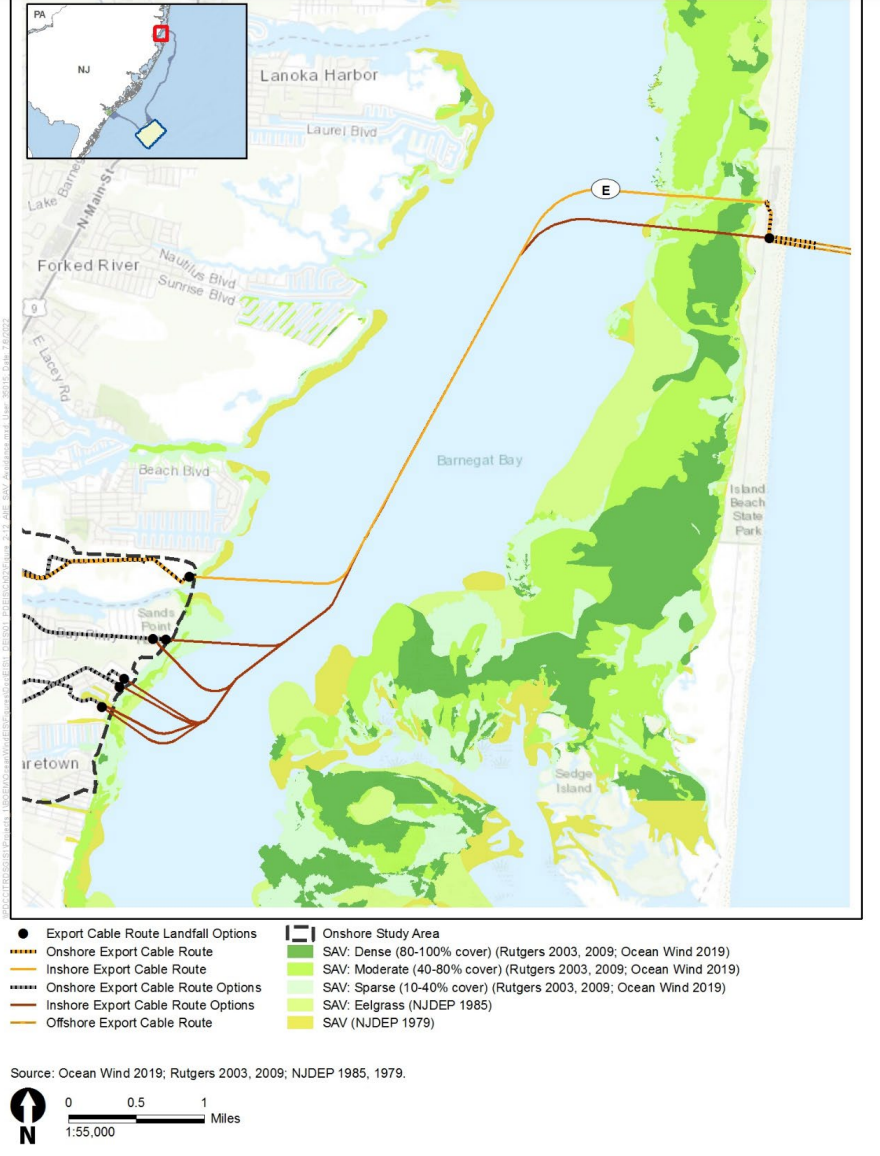The Bureau of Offshore Energy Management is adding two more weeks to the public comment period on plans for the Ocean Wind 1 project off New Jersey, after developer Ørsted came up with alternative routes for running power export cables to shore.
The revision to the Ocean Wind construction and operations plan would take a slightly different path across Barnegat Bay and onto the mainland to reach to former Oyster Creek nuclear generating site, dodging environmentally valuable eelgrass beds in the shallow bay.
The planned cable route from the 1,100-megawatt array off Atlantic City north to the Ocean County coast would make landfall on the Island Beach State Park barrier beach, then proceed across the bay to Oyster Creek, site of the first U.S. commercial nuclear power plant commissioned in 1969.
The route change would shift the cable path by about 1,000 feet to avoid submerged aquatic vegetation – in Barnegat Bay typically eelgrass, a critical habitat for fish and blue crabs.
BOEM announced Aug. 3 it is extending the public comment period past Aug. 8 by another 15 calendar days. The extension is “based on requests from the public and a technical correction to the Ocean Wind 1 Construction and Operations Plan” and draft environmental impact statement, according to the agency.
While BOEM is looking at changes to protect eelgrass beds, fishing industry advocates who sought other changes to the construction and operations plan are still waiting.
In an April 29 letter to the agency, the Responsible Offshore Development Alliance stressed the surf clam fleet’s longstanding goal of 2-nautical mile spacing between turbine towers for maneuvering their heavy dredge gear.
The group also sought wider vessel transit lanes between Ocean Wind and the Atlantic Shores array planned a few miles to the north, beyond the 1 nautical mile width described in the plan.
“A transit corridor of no less than two nautical miles between the two leases would need to be included in these projects’ designs to safely preserve these traditional transit paths based on the distance and use patterns of the area,” according to the RODA letter.
“However, due to a high presence of recreational fishing vessels for much of the year, submerged materials, overall port traffic, radar interference associated with OSW structures, and other factors, four nautical miles is appropriate.”
The environmental group Clean Ocean Action had called on BOEM to extend what was originally a 45-day public comment period by two months.
The group argued that “BOEM is not limited to this time period, which is wildly unrealistic, unjust, and poses undue challenges for all parties interested in providing thorough feedback on this unprecedented document and project.
Indeed, providing only the minimum required public review and comment period, as well as the expedited fast- tracking process for offshore wind in general, suggests administrative bias toward the industry.”



.JPG.small.400x400.jpg)

